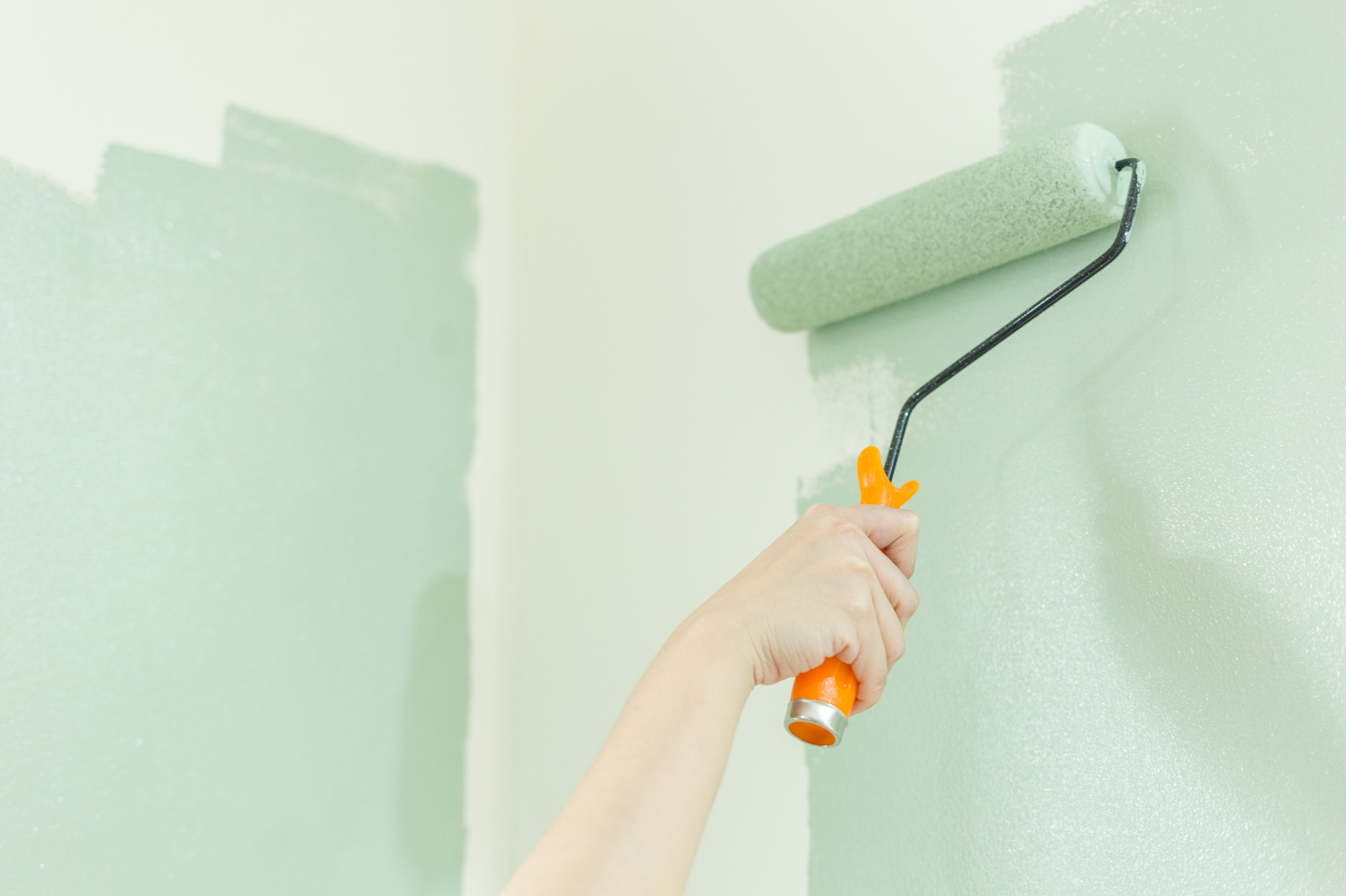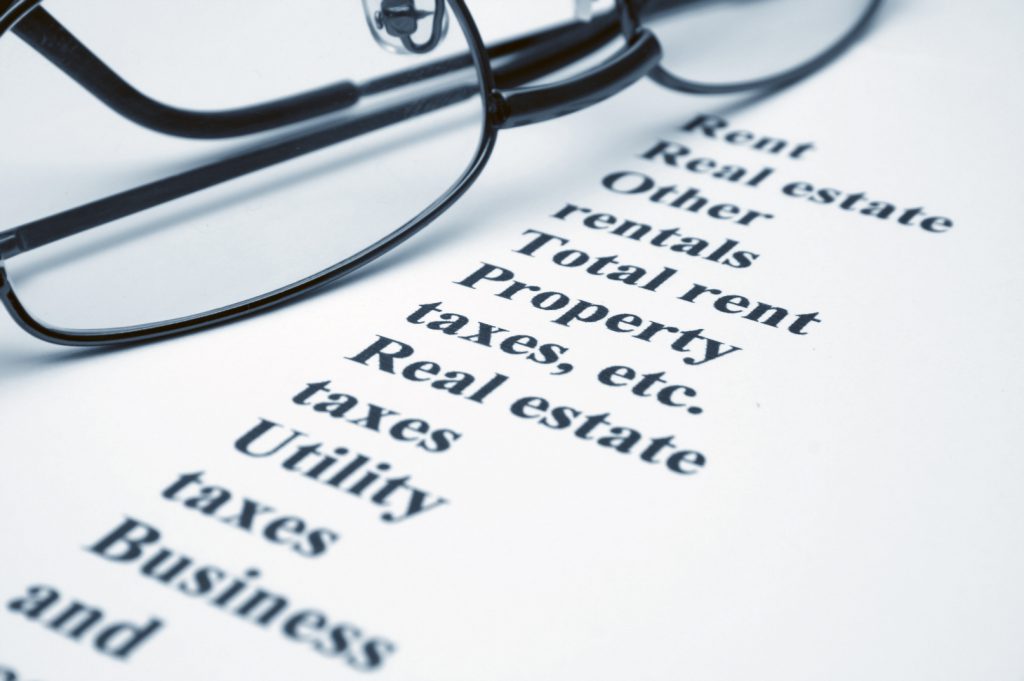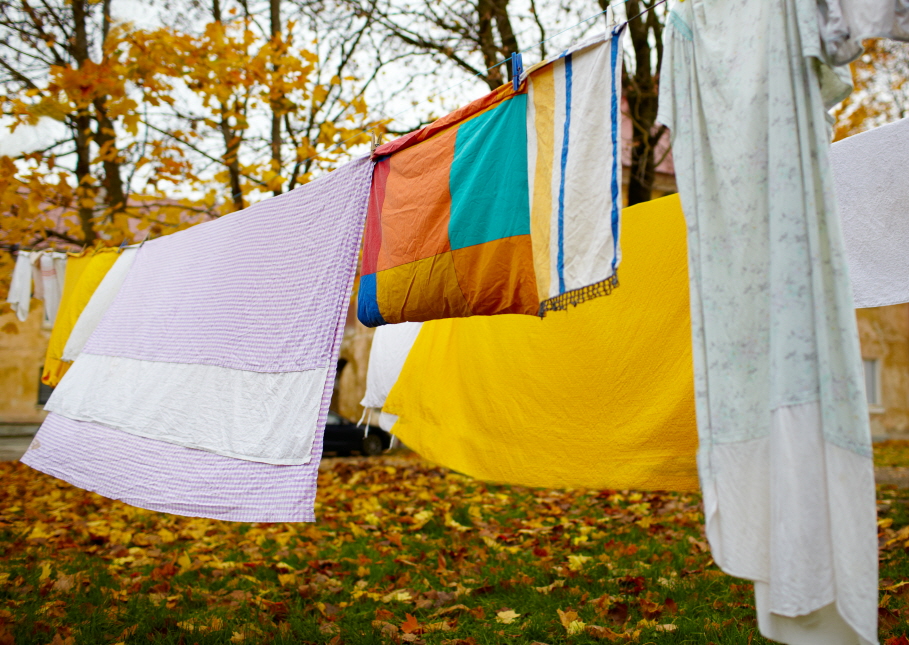Tag Archives: homes for sale
7 Affordable Upgrades for Your Rental Properties

You can put many aspects of owning and managing rentals, such as rent collection, on autopilot. But not everything.
Property maintenance and upkeep can eat into your revenue and cause stress, and occasionally, make you wish you weren’t a landlord. The good news: there are easy and affordable ways to keep up your property and increase your cash flow at the same time.
I bought my first house when I was 22, and I’ve enjoyed success (with a couple of failures) by investing in real estate. Along the way, I discovered these affordable upgrades for rental properties.
1. Replace Cabinet Doors
Most people consider replacing worn-out cabinets entirely. But you can replace just the cabinet doors with high-quality, solid wood doors, as well as the hinges and knobs. Then you can paint the doors.
Jen from The Thrifty Home documents her re-painting experience, and she shares before and after pictures of her kitchen.
Tip: Don’t try to use Ikea cabinet doors on non-Ikea cabinet frames.
Potential Cost: $1,000 – $3,000
2. Add a Fresh Coat of Paint
The improvement with the highest ROI is a bucket of paint.
Painting has the highest return on investment for any rehab budget. However, you can enjoy an even higher return on investment by buying paint in bulk.
A lot of investors buy badly mixed paint that paint stores and hardware stores sell at a steep discount. The problem with buying these kinds of paint, when you’re working on a large-scale, is if you have to do any touch-up work, it’s a nightmare to match paint.
I highly recommend you negotiate a discount for a large bulk order of paint. You should be able to get another discount by opening a company account where you buy paint.
Potential Cost: $100 – $1,000
3. Replace Doors
Doors tend to get damaged at rental properties. Most investors either ignore this damage or cover it up with some touch-up paint. However, new doors dramatically increase the visual appeal of a rental unit, and they aren’t that expensive.
I get my doors at my local hardware store and don’t pay any more than $80 a piece for them. You should also check with a local building supply company, which may have extra doors at a deep discount.
With a little help, you can install a new door without changing the frame.
Potential Cost: $500 – $5,000
4. Pressure Wash
People will spend tens of thousands of dollars on renovations, but won’t pay to properly clean the outside of a house. Pressure washing a property makes a big difference in how a home looks.
I usually pay about $250 to have a house pressure washed. Or you can do it yourself. It’s easy to pressure wash a house with a long wand.
Potential Cost: $100 – $300
5. Landscape
Landscaping can directly reduce your vacancy rate. If you’re willing to a do a little work yourself, landscaping materials can be inexpensive. Whenever I have a hard time renting out a property, I buy some flowers to put outside.
Within a week, I have the property rented. This could be due to other factors, but the cost for flowers is less than $40. So now I make it a practice to have nice flowers when weather permits.
Potential Cost: $100 – $500
6. Install Wood Flooring
Choosing carpet for a rental property is a rookie mistake. Carpet is NEVER a good option. Carpet gets stains and looks dingy after minimal wear (especially with cheap carpet). In my experience, carpet in my rental properties needs to be replaced every five years.
Wood flooring is more affordable than most people realize. Shop around, and you may be able to buy flooring for about the same price as an expensive piece of carpet. The best part about wood flooring?
- Tenants love wood flooring.
This will help your property standout compared to other rental properties they are considering. - Wood flooring rarely needs to be replaced.
This is a huge cost advantage for you. And wood flooring is fairly easy to fix when necessary.
Tip: Light-colored hardwood doesn’t show scratches as much as dark hardwood floors.
Potential Cost: $3,000 – $10,000
7. Add Backsplashes
Backsplashes add value to your properties. They are durable and easy to clean. You need to be careful with the type of backslash you choose, however, because some backsplashes date a property.
Choose a classic look that is timeless, and avoid trendy colors. For example, white subway tiles make a good choice; frosted turquoise, not so much.
Bonus: Offer a Washer/Dryer
This upgrade pushes the boundaries of affordable. However, I’ve experienced a good return on this investment. I routinely add an extra $50 to $80 per month in rent for a stackable washer/dryer.
I buy my washer/dryer combinations from Craigslist for $100-$150. However, you can get a brand-new one from Amazon for around $600. I’ve also bought new kitchen appliances from Appliance Connection, and I’ve been very pleased.
Potential Cost: $150 – $600
Other Ideas
I hope this gives you some ideas on affordable ways to upgrade your rental properties and achieve higher rent! Do you have other tips about reliable upgrades? Share them in the comments!
Credit to Jimmy Moncrief
Jimmy is a multifamily real estate investor and bank credit officer.

HAPPY Valentine’s Day
How to Deal With Noisy Tenants in Your Apartment Building

Every renter deserves peace and quiet. But people interpret “quiet” in different ways, which can lead to uncomfortable situations for landlords.
For example, consider this true story that I call “The Case of the Midnight Guitarist.” The landlord, a friend of mine who owns several properties in California’s San Lorenzo Valley, told me about a musician who lived in one of two rental units in a quiet, creek-side setting.
“One day I received a noise complaint from the tenants in one of the units. It seemed the renter in the other unit had a habit of unwinding from a long day at work by practicing guitar. Unfortunately, his guitar was electric and had to be plugged into an amplifier to be heard. He would play what he thought were peaceful riffs well into the night. My other tenants didn’t think the riffs were peaceful.”
My landlord friend asked the guitarist to wear headphones, but he refused. All the renters had signed a standard rental agreement that failed to address noise issues, so my friend faced a quandary: How to ensure that every tenant experienced quiet enjoyment without violating the guitarist’s rights?
What is Quiet Enjoyment?
An implied warranty between the tenant and landlord, a provision for “quiet enjoyment” may contain the word “quiet,” but that doesn’t necessarily proscribe noise. It simply means that the tenant is entitled to undisturbed use of the premises. Courts read this warranty into every lease, whether or not it’s expressly stated.
Among the benefits it guarantees are:
- Use of all amenities supplied with the unit.
If an appliance breaks, the landlord has to fix it. - Unimpeded access to the unit.
The landlord is expected to keep the driveway clear and all doors and lock sets in good working order. - Freedom from intrusion.
In the absence of lease violations or overt damage to the premises, tenants have a right to privacy, which includes freedom from an unreasonable number of landlord visits. - Peace and quiet.
The landlord must address any disturbing noise within his or her control, such as a chirping smoke alarm.
One Person’s Noise is Another’s Music
It’s difficult to make everyone happy all the time. In the case of the midnight guitarist, one set of tenants was disturbed. But the guitarist viewed the noise he created as inspiring. As far as he was concerned, his guitar playing constituted quiet enjoyment of the premises.
After my friend received several complaints, he voluntarily granted the aggrieved tenants a rent reduction to encourage them to stay. My friend lost money, because of his failure to address noise in the lease.
A properly worded lease can provide much-needed leverage.
The landlord’s bottom line was affected the most, because he failed to address noise in the lease.
Avoid Generic Rental Agreements
My friend used a generic California rental agreement downloaded from the internet. It contained no specific quiet enjoyment clause and did not address noise at all. Covering little more than rental payments, late fees, and security deposits, it left most other issues—such as maintenance and usage guidelines—open.
There’s nothing “free” about a free lease template. It’ll cost you thousands of dollars in damages.
More sophisticated leases usually contain a quiet enjoyment clause, but it generally covers the use of the unit itself—not the impact of the tenant’s use on other renters. It is possible, however, to include language concerning noise in that clause. Moreover, the clause can contain a caveat, such as “subject to all terms and provisions of this lease,” and the lease can address potential disturbances in a separate clause.
Enforce Quiet Hours
An effective way to ensure equal enjoyment of quiet time for all tenants is to specify hours during which noise is to be kept to a minimum. These hours may differ on weekdays and weekends, but they typically begin at 10 p.m. The lease should specify that “quiet time” applies to guests as well as tenants.
Also check with your local county or town code enforcement office. They might already have noise ordinances in place, which you could enforce. The great thing about noise ordinances is that if a tenant doesn’t comply, you can call the police and they will enforce it for you.
Resolving Disputes
Even if all renters agree to a “quiet hours” clause, it can be difficult to resolve a dispute. Different people tend to have different noise thresholds.
Landlords typically use some of the following criteria to help them adjudicate noise complaints:
- Multiple complaints.
Has more than one tenant complained? Multiple complaints carry more weight than one from a (possibly oversensitive) individual. - Recurring issues.
Are complaints recurring? This points to a pattern of willful disturbance. - Source of the noise.
Is the noise a product of everyday activities? An 80% carpet rule can help prevent noise disturbances in the case of multistory dwellings. - Actions to remedy.
Have any steps been taken to address the source of the noise? The Midnight Guitarist, for example, may have tried turning down the volume. - Documentation and credibility.
Has the complaining tenant documented instances of disturbances? Dates, times, and estimates of noise levels are all helpful.
Penalties
The quiet hours lease clause should also specify penalties for violation. Eviction should be an option but not the only one. A monetary penalty should prevent recurrences in most cases.
A Sample “Quiet Enjoyment” Clause
While the exact language to use in a quiet hours clause may vary from state to state, a typical one might look something like the following:
Quiet Enjoyment. The tenant may live in and use the apartment without interference subject to this lease. Tenant may not disturb the quiet enjoyment of any other tenant in the building or surrounding neighbors. The tenant is responsible for adhering to the building’s quiet hours. Quiet hours are from (Insert Quiet Hours for Property) on weekdays and from (Insert Quiet Hours for Property) on weekends. If tenant violates the quiet hours policy on three separate documented occasions, the tenant is in violation of the lease agreement. The landlord reserves the right to charge the tenant a penalty of $ (Insert Dollar Amount) and/or evict the tenant, the decision of which is the sole right of the landlord.
Credit to Chris Deziel
Chris has owned and managed 4 rental properties in Santa Cruz, CA, and Salida, CO. He is a DIY handyman expert for popular sites like Pro Referral.

How to Pick The Right Real Estate Agent
Tech Trends to Embrace in 2017

From big data to virtual reality, technology continues to make huge strides in the real estate space year after year. But, if you’ve ever worried that these advancements will make your brokerage services obsolete, never fear. I’m here to put your mind at ease.
The National Association of REALTORS®’ 2016 Profile of Home Buyers and Sellers survey found that 87 percent of buyers used an agent last year compared to only 81 percent in 1981. You read that right. As technology and internet connectivity have increased, more consumers are turning to agents, rather than fewer.
But that doesn’t mean you should become complacent. We must remain the experts in all things real estate and continue to offer irreplaceable value in our marketing and negotiation skills. That includes incorporating tech trends that will help buyers and sellers achieve their goals.
“Aside from internalizing technology on an everyday basis to run your real estate business … there are some very huge tech trends that literally can change everything as we know it,” said Niraj Ranjan Rout, cofounder and CEO of Hiver, which publishes the Gmail app of the same name, in an email interview about the biggest tech trends of 2017.
Here are a few such trends:
Virtual Reality
Consumers have long been enjoying virtual realty in the gaming industry. Now, many — especially millennial buyers and sellers — have come to expect the VR and 3-D video experiences. Even in my own household, it’s unheard of to go see a movie like “Star Trek” without seeing it in 3-D. VR has seeped into our society’s collective expectations, and that doesn’t turn off when it’s time to house-hunt.
“VR is most certainly one of the most exciting and course-altering tech trends for real estate,” said Rout, who notes many different real estate firms are experimenting with VR headsets such as Oculus Rift and Samsung Gear.
Sotheby’s International Realty, in partnership with Matterport, recently introduced 3-D and VR tours online. John Passerini, the brand’s global vice president of interactive marketing, was recently quoted on Sotheby’s blog as saying, “Distance can present a challenge when looking to buy a home, and virtual reality has provided a provocative solution. This technology is allowing buyers to purchase homes without having to physically travel to view them, which is especially relevant to the global clientele we serve.”
Indeed, as VR continues to grow, it will completely change the real estate customer’s experience by providing buyers the ability to experiment with different home styling options, navigate floor plans, and get a full 360-degree view of the house. Imagine the day when “a prospect can take a slow walk around the garden of the house, experience the wine cellar, [and] stretch their arms to see if the kitchen is spacious enough,” said Rout.
Big Data
You may not be immediately attracted to Facebook posts from friends checking in at restaurants and post about their lunch, but all that data can actually be useful for your business. Well, maybe not exactly the lunch specials, but geographical check-ins and other types of information being shared may help direct you and your agents to the people who will soon be buying and selling.
Facebook and other companies are collecting all that data in order to tailor advertising and digital marketing. “It allows you to access detailed information about a customer and analyze their past behaviors,” said Rout. “Even simple factors such as the life stage of the prospect, their employment status, marital status, number of kids, and demographics can be included to generate a list of rich targets for whom you have the information to provide rich customer experience.”
There are various ways to retrieve such data, including Facebook ads. With more than 1 billion people logging in daily and sharing bits and pieces about their lives, Facebook is a gold mine of data for real estate professionals to help connect with people when they are gearing up for a move. In fact, Facebook allows advertisers to target consumers by categories such as “likely to move” and “For Sale by Owner.” The days of arbitrarily mailing postcards to people who may not be in the market to buy or sell are long over. Now you and your agents can use big data to directly find the ideal client. And it’s affordable — an ad can cost as little as $1 to $5 per day.
Home Technology
If you’ve ever caught an episode of the old cartoon “The Jetsons,” then you’ve likely fantasized about your own smart or fully automated home. Well, what was once reserved for luxury properties is now available to the mass market. Technology such as smart lighting, automated door locks, temperature controls, and more are increasingly in demand among all home buyers. It’s improving energy efficiency, quality of life, home functionality, and more, said Rout.
Are your agents ready to market smart-home features or advise buyers on the technology that’s available? Do they know the price points and the best local vendors? Do they know what smart-home upgrades can help a home sell faster? “Dismissing technology as some overrated unnecessary luxury can be a not-so-smart thing to do, and so is being a late adopter of new tech trends,” Rout said.
Technology is changing, and it’s enhancing our ability to market to and connect with prospects. Start embracing these trends at your brokerage now to keep your business in tune with what buyers and sellers want, while ensuring that your services continue to be irreplaceable.
Lee Davenport is a real estate broker and business doctoral candidate who trains real estate agents and brokerages on how to work smarter in real estate. Join Lee’s free RE Tech Insider’s Club at LearnWithLee.REALTOR for tips and tools to help your business thrive.

Best Technology for Your Brokerage in 2017

Staying at the forefront of your market means leading with technology. Equipping your brokerage with quality tools will allow you to be faster, smarter, and, well, cooler than your competition.
In 2016, the industry focus was on social trends, including Snapchat, Instagram stories, and Facebook Messenger bots. Heading into 2017, there are seven technology assets that can set brokerages and individual agents apart.
1. Accessible Virtual Reality
When the Google Cardboard VR viewer was launched in 2014, virtual reality started to take off because suddenly, all the VR videos on YouTube became more accessible to smartphone users. For real estate, we’ve had to rely on expensive equipment or outside companies to make VR property videos, but that’s changing. The new Giroptic iO is a 360-degree camera you can attach to your iPhone. For $249, you can take photos, record videos, and even livestream videos in 360 degrees of real estate bliss. They’re available for presale now, with the first units scheduled to be released Jan. 17.
2. Snapchat Marketing
Snapchat continues to be an excellent tool for agents to engage with millennials — all 150 million of them — and other tech-savvy clients in real time. You can boost visibility and brand loyalty by sharing properties and neighborhoods, creating buzz with contests, and offering personal advice. Show followers the real you (within reason), behind-the-scenes action, or silliness at your office. It’s an easy tech tool that makes you real, timely, and approachable.
Additionally, the click-through rates for Snap Ads are five times than for comparable social media platforms, according to Hootsuite. The key to local engagement is to take advantage of geofilters, an illustrative overlay for images based on a geographical location and selected time frame. Snapchat’s On-Demand Geofilters start at just $5. You can build your own artwork using an app like Canva.
Here’s a real-life situation where it makes sense to try Snapchat geofilter marketing: Say your target neighborhood hosts an annual parade. You could build a geofilter for that date and location that all users in the area could access. You could reach thousands of people and it could cost you as little as $20.
3. Social Media Live Video
According to the Web Video Marketing Council’s annual survey, 73 percent of marketers said that online video had a positive impact on their business. With live streaming, expect to see an even larger impact. Here are some platforms to consider:
- The Facebook Live streaming tool is built right into your news feed. Simply click on the live button in the new post field and your followers can see what you’re recording and respond as it happens. Plus, you can save the video for users to watch later.
- Once available only through its Periscope app, live video is now integrated into Twitter itself. Instead of posting a text tweet, you can go live for up to 2 minutes and 20 seconds. Like tweets, your videos are saved and are searchable by the public (so think carefully about what you say on air). Maximize this feature for revealing new listings or promoting upcoming Facebook Live events, videos, or Q&As. If you’re already invested in Periscope, you might want to start letting your followers know you’re on Twitter.
- Instagram live videos can be up to to 60 seconds long. Because it’s a strictly a live feed that disappears immediately with no replay function, this tool offers a serious “sense of urgency,” which is why it could be a great property preview tool. You can still upload a recorded video to Instagram that can be replayed without limits, and Instagram’s direct ephemeral messages lets you privately share images and videos with a maximum of two views.
3. Programming Alexa and Google Assistant
The advent of smart-home devices and hubs has created a huge opportunity for real estate companies. Finding a home value or researching the cost of homes in a certain neighborhood is just a question away.
- For Amazon Echo and devices like the Fire TV stick, more people will be asking their virtual assistant Alexa a wide range of questions. The race is on for real estate companies and individuals to develop custom skills under unique invocation names (and get people to use them). For instance, you could program a response for when users say something like “Alexa, ask Redefy Real Estate how much my home is worth.”
- The Google Assistant can be used to make similar queries through the Google Home or Google Allo apps. Google breaks down these questions into patterns of components that include a trigger phrase (such as “ask”), invocation name (such as “Redefy Real Estate”), action preposition (such as “about”), and action phrase or deep link invocation (such as “my home value”).
Yes, you’ll need a web developer to create these services. And yes, it’s probably costly. But as the number of homeowners who employ this technology continues to grow, eventually it’ll be something you wish you’d done sooner.
4. Virtual Spaces
Brick-and-mortar brokerages may persist for some time, but more companies and individuals will explore and possibly transition to a virtual office model. Between technology and meeting spaces like Regus suites, more walls will fall in 2017. While saving overhead, budgets can be put toward more tech. Also expect to see more virtual transactions in 2017.
5. Data on Tap
Evaluate how well you’re using the data you have access to. Can you provide an instant, accurate market valuation? Can you become a thought leader in the industry based on your own ability to mine data? Big, smart data is also essential for predictive analytics. Though they’ve long been staples for lead generation in the business world, data and algorithms are finally being used to drive marketing in real estate.
6. AI Chatbots
Artificial intelligence has been refined to the point that it’s now a viable and affordable option for customer service. Chatbots provide an incredible opportunity to meet customers where they are, provide instant service, and initiate conversation that converts to leads. For shy or hesitant customers, this provides a neutral platform for conversation. The AI portion can respond and adapt based on what the customer asks to hone in on their real motivation (such as I need to sell now, I’m just curious, I’m lonely and will waste your time talking about nothing).
7. UX
UX — or user experience — is the key to encouraging customers to embrace your technology. If you’re not making it easy and fun for prospects and clients to use all the aforementioned technology, they will disengage. Apps, websites, and other touch points need to be designed for visually pleasing and ridiculously simple navigation. Ask your grandma to “drive” your site or app and you’ll quickly realize how cumbersome it is. Now go test out some of the 2016 Webby Award winners, such as Virgin America. You’ve got some work to do, don’t you?
The landscape is changing in front of you, and the longer you wait to employ new technology to market your business, the less relevant you will become. As an agent or a brokerage, getting ahead in this business depends on your ability to get ahead of technology. So whether you throw yourself into all seven of these assets or utilize a few, you’ll be taking definitive steps to a stronger 2017 and beyond.
Chris Rediger is president and co-founder of Redefy Real Estate, heading all operations since its inception. Chris also oversees Redefy’s rapid expansion and continues to develop and deploy its software infrastructure. He has been in finance and real estate for the last 10 years. As an agent and investor, he has been involved in over 500 real estate investment projects.

Top 10 Pain Points for Landlords and How to Fix Them

Being a landlord can be incredibly profitable, but also very difficult at times.
I don’t know about you, but my properties aren’t exactly on Easy Street.
Over the last 10 years, I’ve experienced many of the issues that plague owners, and cast fear into the hearts of wanna-be landlords.
Through endless reading, trial and error, and tenant feedback, I’ve learned that almost every rental problem has a solution.
Based on my experience, here are the top 10 pain points that most landlords will eventually experience, along with ways to fix or prevent them.
1. Loss of Rent/Income
- Vacancy
- Rent Default (Tenant Stops Paying)
- Tenant Hold-over (Tenant Won’t Leave and Won’t Pay Rent)
Solutions:
- To reduce vacancy, start listing your units for rent 60 days prior to the end of the current lease.
- Screen your tenants better – make sure you don’t let a deadbeat or a scammer into your property.
- Terminate the lease immediately for nonpayment – with proper notice for your state, of course.
- Learn about your local eviction process, and be ready to file the paperwork immediately after lease termination.
2. Eviction
- Court Costs of Eviction
- Strict Legal Rules for Eviction
- Tenant Retaliation by Damaging the Property
Solutions:
- Require a large security deposit (1-2 month’s worth of rent, depending on what is allowed in your state) at the beginning of the lease to alleviate potential expenses of court costs and damages.
- Learn about your local eviction process, and be ready to file the paperwork immediately after lease termination.
- Include a clause in your lease that mandates court costs and attorney’s fees be paid by the prevailing party.
3. Stress of Property Management
- Cleanliness of Tenants
- Unintentional/Intentional Destruction of Property
- Illegal Drug Use
- Lawsuits
- Chasing Down/Collecting Rent
- Tenants Lying to You
- Noise and Nuisance Complaints
- Dealing with Disgruntled Neighbors of Your Rental
- Police/Domestic Violence Issues
- Ensuring Tenant Satisfaction
- Ensuring an Unbiased and Fair Screening Process
Solutions:
- Find a rock-solid lease and stick to it.
- Stop by or drive by the property at least once a month.
- List the tenant’s cleaning responsibilities in the lease.
- Put everything in writing (or email).
- Ask the neighbors to call you first, whenever there is an issue.
- Don’t be afraid to call the police.
- Find a local landlord-tenant lawyer and build a friendship with him or her, before you actually need an attorney.
- Use an automated tool, such as Cozy, to accept applications, screen tenants, and collect rent online.

4. Stress on Personal Life/Relationships
- Spouse or Partner Worried About Finances
- Always Being On-call for Rental Issues
Solutions:
- Include your spouse or partner in the financial decisions and respect their opinion.
- Keep a three- to six-month emergency (or vacancy) fund for each property. Yes, it takes a while to build that up, but you’ll sleep better.
- Ask your tenants to report issues via email or text, which only takes a second to review. If it’s urgent, you can deal with it immediately.
5. Tenant Turnover
- Trying to Find a New Tenant
- Cleaning up After a Previous Tenant
- Feeling of Rejection When Prospective Renters Don’t Want to Rent Your Place
- Exhaustion from Showing a Unit Week After Week
- Handling, Storing and Disposing of Abandoned Personal Property
Solutions:
- When looking for new tenants start early, while the unit is still occupied.
- List your units for rent 60 days prior to the end of the current lease.
- Refresh your listing on Craigslist every three to five days.
- Don’t sweat the clean-up, just hire a maid service and deduct the cost from the deposit (excluding normal wear and tear).
- Schedule showings back-to-back, every 30 minutes, in a four-hour block on a Saturday. I call this “The Landlord’s Open House.”
6. Repairs
- Knowing When to Do It Yourself and When to Hire a Pro
- Finding and Evaluating Qualified Contractors
Solutions:
- Create a handy tool bucket that you can keep in your trunk.
- Your rentals will provide great opportunities to learn basic handyman skills, but don’t get in over your head. I’ve made small leaks much worse because I didn’t know what I was doing.
- Buy an all-purpose DIY book, and skim through it regularly. Keep it in your car, so you always have it nearby.
- Ask to observe every service professional that comes to your property. You’ll learn a lot through observation.
- Research contractors on Angie’s List, Handy (formerly Handybook), Yelp, and the Better Business Bureau.
7. Compliance with Laws
- Obtaining Business Licenses and/or Landlord Registration
- Understanding Landlord-Tenant State Laws
- Knowing Landlord vs. Tenant Rights
Solutions:
- Don’t try to circumvent the government. You may get away with it for a while, but eventually it will catch up to you.
- Learn your state’s rental laws.
- Join a local landlord association, rental housing association, or real estate investor association to network with other landlords.
- Attend landlord training in your city. Landlordology provides free guides and occasional online webinars. Join our newsletter to stay in the loop.
8. Adequate Insurance
- Insuring Each Property
- Insuring Against Rental Income Loss and Lawsuits
- Insuring Your Portfolio
Solutions:
- You might get a better rate if you insure all your properties with a single provider.
- Inform your provider that your properties are rentals, and not homeowner occupied (critical!).
- Sign up for “Fair Rental Income Protection” in your policy to cover the rent during a covered loss.
- Make sure you have proper coverage.
- Consider getting “umbrella” insurance to cover excess liability and risk not covered by the individual policies. An umbrella policy will insure your entire portfolio, not just your properties.
9. Leases
- Finding a State-compliant and Bullet-proof Lease
- Explaining Lease Clauses to Tenants
- Knowing Whether or Not Your Lease Will Hold up in Court
Solutions:
- Use a premium, state-specific lease that has been reviewed by lawyers. It’s worth the investment. Check our toolbox for suggestions.
- Don’t ever use a “free lease” that you find on the internet. It could cost you thousands in lawsuits.
- Review your state laws for any required or prohibited clauses.
- Review the entire lease with the applications before signing.
- Use online document signing tools, like SignNow, HelloSign, and Docusign, to digitally sign leases remotely.
10. Finances
- Keeping Track of Security Deposits
- Calculating Interest on Deposits
- Commingling Funds
Solutions:
- Keep the security deposit in a separate, interest-bearing bank account.
- Open a separate security deposit bank account for each property.
- Collect and give interest on the deposit money if you are required to by law. If the statutes don’t regulate interest, just give the tenant all the interest that is accrued.
BONUS: Taxes
- Keeping Track of Income and Expenses
- Calculating Depreciation
- Sending out 1099s to Contractors
- Deciding to DIY or hire a CPA
Solutions:
- Use an all-in-one property management software that lets you track income and expenses. If not, there are other great tools, like Freshbooks, Excel, and Quickbooks.
- Property Managers (not landlords) who pay a contractor more than $600 in a given year, must send out 1099s. Some tools like, Buildium and Appfolio can make this task easier.
- TurboTax can easily prepare and file the taxes for most small landlords. If you have multiple business entities, joint ownership, or tax shelters, then you should probably hire a CPA.
Credit to Lucas Hall
Lucas is the Chief Landlordologist at Cozy. He has been a successful landlord for over 10 years, with dozens of happy tenants and a profitable income property portfolio.

Are You Addicted to Your Phone?
If you’re tied to your phone all day and night, try these strategies for untethering yourself—even for a little while.

Maria Azuaje admits that she can’t be without her phone. “I tried to turn it off at 8 p.m., but I have never been able to. I’m addicted, completely,” says Azuaje, a sales associate with Berkshire Hathaway HomeServices Florida Properties Group in Miami.
If you take your phone to bed with you, can’t manage not to peek at it even when you’re with a client, and use it to scan social media whenever you have a minute of downtime, you’re probably addicted to your phone. But what if it starts to affect your business—or your life? Here are some tips to keep your addiction in check:
Shut it down during one activity each day.
Pick a time when you do something routine—eat dinner with family, play with your kids, or take a relaxing bath—and turn your phone off during it. After spending some uninterrupted time focusing on an activity, you might feel refreshed. If you’re really serious about ungluing yourself from your phone, pick a time each night to turn it off until morning. You’ll probably get better sleep.
Turn off the vibrate function.
You probably put your phone on silent when you’re with a client, but you might leave it on vibrate mode. Even when it vibrates, you instinctually reach for your phone, and you don’t want that distraction when you’re conducting business and it sends the wrong message to the person you’re meeting with. Turn the vibrate mode off, put it on silent, and put your phone away when a client needs your full attention.
Disable notifications.
Between Facebook, Twitter, Instagram, and every other app you have on your phone, you could get a new notification of activity every minute. Turn notifications off on your phone so you don’t feel compelled to keep up with every alert.
Create a social media hour.
Set aside an hour each day to focus solely on your social media channels. Even if it’s just to scroll through feeds on your phone for fun, put a time limit on it.
Hire an administrative assistant.
Let this person be the first point of contact for new clients so you’re not constantly fielding phone calls. You can also forward calls from your cell to your assistant during times when you need to minimize distraction. This approach provides callers with immediate attention without interrupting you.
10 Unconventional Tips To Help Minimize Home Allergies
If you’ve ever experienced coughing, sneezing, itchy eyes, a runny nose, a scratchy throat, rashes, hives, low blood pressure, breathing trouble or an asthma attack, allergies could be to blame. So is there a way to minimize home allergies? Absolutely but let’s first take a look at the magnitude of the problem.
- According to the Allergy and Asthma Foundation of America (AAFA), over fifty million Americans suffer from allergies today, including 30 percent of adults and 40 percent of children.
- Allergies are among the country’s most common, yet often overlooked, diseases. Since there is no cure for allergies, prevention is key.
10 tips to minimize home allergies
While many people only concern themselves with certain times of the year, for others, “allergy season” is a year-round, dismal reality since allergens can be found indoors and outdoors. Reducing allergens in your home is a great first step towards prevention and optimal health. Your home should be a safe haven where you rest, rejuvenate and recuperate from daily stress and toxic exposures – but what you can’t see – can hurt you. Your home may, in fact, be harboring a broad range of allergy triggers.
From insects and furry companions to toxic, synthetic fragrances in cleaners, air fresheners and candles, it may be difficult to identify the exact source in the home causing your unwanted allergy symptoms. Why not prevent allergens from entering the home in the first place rather than treating or masking allergy symptoms? Awareness and simple action steps can result in profound changes for both your home and your health.
Here are 10 tips to minimize home allergies:
1.) Reduce clutter
Go on a paper cleanse and say sayonara to unwanted piles of papers, books and magazines lurking in your bedroom, under your bed or in your home office. Keep only what you need, and recycle the rest. The same applies to cluttered shelves, cabinets and closets, which can be breeding grounds for insects, mold, rodents and their droppings. You’re home will not only look better, you’ll feel better, too.
2.) Change the filters
Since biological contaminants like dust and dirt permeating your home’s air can’t be always be seen, it’s often overlooked. Be sure you are changing the furnace filter for your HVAC (heating and cooling) system every season; or every three months per the EPA’s recommendation. A high performance filter will capture over 95 percent of large airborne allergens such as mold spores, pollen, and dust mite debris from the air passing through it. Not only do these filters help maintain better airflow to reach your desired temperature, but will also reduce energy use resulting in savings on your bill.
3.) Wash linens naturally

Are you washing your bed linens in HOT water every two weeks (or more)? If not, your beloved bed is likely home to millions of dust mites – ewww! Be sure to wash your sheets and pillowcases in at least 140 degrees (Fahrenheit) to kill those nasty dust mites. You should also be seasonally washing your curtains, comforter, area rugs and duvets. Be sure to use a nontoxic detergent free of synthetic fragrance, petroleum based solvents and optical brighteners. I also recommend vacuuming the top of your mattress with a HEPA, airtight vacuum hose or handheld device. Also, let the sunlight hit your mattress and open the windows when changing your bedding. The sunlight will kill bacteria and absorb the moisture that creates a perfect breeding ground for dust mites.
4.) Bring the fresh air in

Open the windows during non-allergy season to let your home breathe and allow for better circulation and removal of built up toxins, dust and debris. During allergy season, this isn’t always an option. Instead, place low-pollen plants such as Peace Lilies or Swedish Ivy, throughout the home and out of pets reach. In addition to removing CO2 and creating oxygen, these plants have been shown in studies by NASA to remove several toxic chemicals from the indoor air. Plants can gather dust, so it’s important to clean them regularly.
Also, be sure to keep moisture at bay by using exhaust fans after showering and when cooking to vent out particulates. Keep wet towels off the floor and fully dry them to avoid mold and mildew build up. I recommend a mildew resistant shower curtain such those made from hemp. If you live in a high moisture area, consider implementing a dehumidifier to keep humidity levels below 50 percent.
5.) Snuggle with a mate, not a mite
Since your skin is your largest organ, you want to make sure what you’r sleeping on will prevent unwanted dust mites. In addition to throwing your pillow in the dryer on high heat to kill dust mites (or washing, depending on the material of your pillow), you should definitely use an organic cotton pillow and mattress barrier cover if you have an allergy to dust mites. Avoid plastic barrier covers as these can off-gas dangerous VOC’s (volatile organic compounds) into the air.
6.) Clean greener
In addition to wet mopping and damp dusting to capture accumulated dust, avoid cleaning products that can agitate allergy symptoms. Instead, make your own from ingredients in your kitchen cabinets. A mixture of baking soda and natural dish soap makes a great tub, tile and toilet cleaner; while two parts water to one part white distilled vinegar can be used for streak-free windows and glass surfaces.
7.) Use an air purifier
If you don’t have a whole house air filtration system, then implementing a stand alone room air purifier is a must! A good unit will not only remove airborne allergens, but will also capture dangerous VOC’s, gases and odors from the air your breathe. Place this in your bedroom for optimal effectiveness.
Dyson Pure Cool Link that detects and removes harmful pollutants and allergens in the air down to 0.3 microns. It’s an effective and convenient solution to reduce air pollutants and allergens as they emerge.
8.) Choose allergen friendly fabrics
Allergens could be permeating your bedding and wreaking havoc on your health. Some materials and fabrics are prone to harbor allergens, moisture, bacteria and dust mites. Down, for example, is one such material that should be avoided. It’s highly allergenic and the treatment to animals to create down is downright inhumane. Opt instead for wool which naturally wicks away moisture and acts as a natural flame retardant as well as natural (not synthetic) latex which is inherently dust mite resistant.
9.) Bare it on the floor
While it is warm and cozy underfoot, carpet can harbor all kinds of nasty things. Millions of microorganisms and over 120 nasty chemicals can be found in carpet backing, adhesives and the fibers themselves, as well as stain and water resistant treatments that have been applied to the carpet. Wall to wall carpeting is a no-no, especially in the bedroom and wet areas such as laundry and bathrooms. Choose hard surfaced flooring instead such as cork, FSC-certified hardwood flooring, concrete or ceramic tile. If you’re on a budget, look for linoleum or Marmoleum which is made from linseed oil (not vinyl flooring made from PVC which should be avoided at all costs). Carpet, in particular, harbors allergens and should be cleaned thoroughly with a HEPA vacuum and non-toxic cleaner.
10.) Make it a furry-free zone
We all love our animal companions, and many like them soo much they share the same bed. This can create allergic reactions from pet hair to pet dander. Establish rules from the beginning so your pet sleeps in his or her own (organic) bed. Also, you should shampoo and groom your pet with a nontoxic formula to protect their health (and yours).
Credit to Lisa Beres








